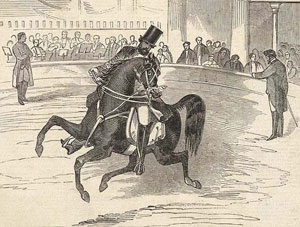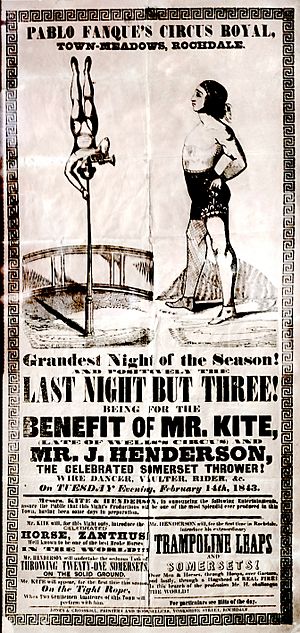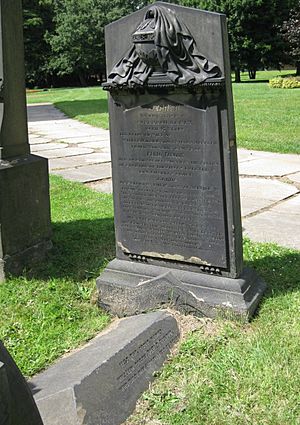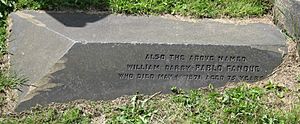Pablo Fanque facts for kids
Quick facts for kids
Pablo Fanque
|
|
|---|---|
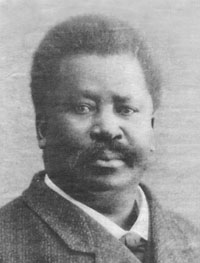 |
|
| Born |
William Darby
30 March 1810 Norwich, England, United Kingdom
|
| Died | 4 May 1871 (aged 61) Stockport, England
|
| Occupation | Circus proprietor; equestrian performer |
| Years active | 1821−1869 |
| Spouse(s) |
|
Pablo Fanque (born William Darby; 30 March 1810 – 4 May 1871) was a famous British circus owner and horse rider. He was the first recorded Black circus owner in Britain. His circus was very popular for 30 years during the Victorian era, which was a golden age for circuses.
Since the 1960s, many people know Pablo Fanque because he is mentioned in The Beatles song "Being for the Benefit of Mr. Kite!" from their 1967 album Sgt. Pepper's Lonely Hearts Club Band.
Contents
Early Life of Pablo Fanque
We don't know much about Pablo Fanque's early life. Records show he was born in Norwich in 1810. His birth name was William Darby. He was one of at least five children born to John and Mary Darby. When he got married in 1848, he said his father was a "butler."
Some historians think his father might have been born in Africa. Pablo Fanque was reportedly orphaned when he was young. Another story says he was born in a workhouse into a large family.
There has been some debate about his exact birth year. However, census records from 1841, 1851, and 1871 show he was born in 1810. A birth record in Norwich also confirms a William Darby was born on April 1, 1810. A blue plaque in Norwich, honoring Fanque, also uses this birth year.
Pablo Fanque's Circus Career
William Darby started his circus career at just 11 years old. He became an apprentice to circus owner William Batty. His first known performance was in Norwich in 1821, where he was called "Young Darby." He did amazing horse stunts and walked on ropes.
Later, William Darby changed his professional name to Pablo Fanque. He became very well known for his skills.
Fanque had a very successful debut in London in 1847. The Illustrated London News newspaper wrote about him. They said he was an "artiste of colour" and that his horse was incredible. The horse, named Beda, was a black mare that Fanque had bought from Batty. This shows how talented Fanque was at training horses.
The newspaper also shared more about Fanque. It said he was from Norwich and about 35 years old at the time. He had learned his skills from Mr. Batty and later worked with Mr. Ducrow. In 1841, he started his own circus with just two horses. He soon built a great collection of horses and ponies. He became very popular in Lancashire.
The newspaper praised his performances, especially his horse's ability to dance to music. They said it was "truly surprising." They also called Fanque a "skilful rider" and a "very good equestrian."
Fanque's circus toured all over England, Scotland, and Ireland for 30 years. He often performed in the Midlands and Northern England. Some cities he visited include Birmingham, Leeds, Liverpool, and Manchester. In Edinburgh, Scotland, he even had his own place called Pablo Fanque's Amphitheatre. In Cork, Ireland, he built an amphitheatre in 1850.
Fanque's children also joined his circus. One of his sons, Ted Pablo, became a performer. They worked with other famous acts, like the American rider Young Hernandez and the clown Henry Brown. In 1861, the famous prizefighter Jem Mace toured with Fanque's circus.
In 1869, a scary event happened at Fanque's circus in Bolton. A tightrope walker named Madame Caroline stumbled. She was hanging 60 feet (18 m) in the air! People below helped her, and she bravely let go to fall safely into the crowd's arms.
While some reports didn't mention Fanque's background, others noted he was "a man of colour." This shows he was of mixed race. In 1905, a chaplain for the Showmen's Guild said that in the circus world, there was "no colour-line." This meant that Fanque's talent helped him succeed in Victorian England, despite his mixed heritage.
Pablo Fanque and The Beatles
In 1967, John Lennon of The Beatles wrote the song "Being for the Benefit of Mr. Kite!" He got the idea from an old circus poster for Pablo Fanque's Circus Royal from 1843. Lennon bought the poster from an antique shop in Sevenoaks, Kent.
The poster advertised a show in Rochdale. It mentioned "Mr. J. Henderson, the celebrated somerset thrower" and "Mr. Kite." Lennon changed some of the words for his song. For example, he sang, "The Hendersons will all be there/Late of Pablo Fanque's Fair/What a scene!"
The song's title, "Being for the Benefit of Mr. Kite!", comes directly from the poster. Mr. Kite was William Kite, a performer who worked in Fanque's circus from 1843 to 1845. "Mr. J. Henderson" was John Henderson, a skilled wire-walker, horse rider, and clown. He performed with his wife Agnes.
Pablo Fanque's Kindness and Community Work
The "Benefit for Mr. Kite" was one of many special shows Pablo Fanque held. These "benefit performances" helped circus performers who didn't have regular retirement or health plans. They also raised money for community groups.
Fanque was a member of the Loyal Order of Ancient Shepherds, a group that helped families during illness or after a death. For example, in 1845, a show in Blackburn helped the Blackburn Mechanics Institution and the Independent Order of Odd Fellows. This show gave money to their Widows and Orphans Fund. Fanque did similar good deeds in other towns.
In 1857, Fanque held a benefit show in Bradford for the family of a clown named Tom Barry who had passed away. Fanque sent £10 from the show's profits to Barry's widow, even though it had been a "dull season." In 1858, his circus held a "Masonic Benefit" in Glasgow.
In 1843, some church leaders in Burnley were criticized for going to Fanque's circus. But a reader wrote to the newspaper defending him. The reader said that Fanque was known for being honest and respected. They felt he provided "perfectly innocent recreation" that kept people from "revelling and drunkenness."
A newspaper in Bolton in 1846 showed how much people respected Fanque. Members of the "Widows and Orphans Fund" gave him a special thank you gift. They praised his kindness and hoped his good deeds would be remembered for generations.
Partnership with W. F. Wallett
Pablo Fanque was good friends with the clown W. F. Wallett in the 1840s and 1850s. Wallett even managed Fanque's circus for a while. Wallett was known as "the Queen's Jester" because he had performed for Queen Victoria.
Wallett performed with Fanque's circus in many cities like Leeds and Glasgow. Sadly, during a benefit show for Wallett in Leeds, the circus building collapsed. Fanque's first wife died in this accident. Wallett's wife was with her but was not seriously hurt.
Pablo Fanque's Family Life
Fanque married Susannah Marlaw, who was the daughter of a buttonmaker. They had two sons. On March 18, 1848, his wife Susannah died in a tragic accident. It happened during a circus performance in Leeds. Their son was doing a tightrope act when part of the gallery where 600 people were sitting collapsed. Susannah Darby was the only person who died, hit by heavy planks.
Years later, a newspaper in Leeds remembered the sad event. It mentioned the "melancholy accident" and how much sympathy there was for Fanque. A special monument was placed on Susannah's grave in Woodhouse Lane Cemetery.
In June 1848, Fanque married Elizabeth Corker, who was also a circus rider. She was 22 years old. With Elizabeth, Fanque had two more sons, George and Edward Charles, known as "Ted." Both sons joined the circus. Ted Pablo also became a famous boxer. A daughter, Caroline Susannah, died when she was just over a year old.
Census records show Fanque living with different wives at different times. In 1871, just before he passed away, he was living with his wife Elizabeth and his two sons in Stockport. Two of his children with Elizabeth, William and Elizabeth, died young in 1852 and are buried in Edinburgh.
Death of Pablo Fanque
Pablo Fanque died from bronchitis on May 4, 1871, in Stockport, England. His funeral procession was very grand. A band played the "Dead March" in front of his hearse. Fanque's favorite horse followed, along with coaches and many mourners.
Pablo Fanque is buried next to his first wife, Susannah Darby, in Woodhouse Lane Cemetery in Leeds. This cemetery is now part of the University of Leeds campus. While many graves have been moved, the monument Fanque built for his wife and a smaller one for himself still stand.
Susannah Darby's monument reads:
- SACRED
- TO THE MEMORY OF
- SUSANNAH DARBY
- AGED 47 YEARS
- THE BELOVED WIFE OF
- WILLIAM DARBY, EQUESTRIAN MANAGER
- PROFESSIONALLY KNOWN AS
- PABLO FANQUE
- HER DEATH WAS OCCASIONED BY THE FALLING
- OF A PART OF THE CIRCUS ERECTED IN
- KING CHARLES' CROFT
- LEEDS
- ON SATURDAY THE 18TH DAY OF MAY 1848
- HER BEREAVED AND AFFLICTED HUSBAND
- HAS CAUSED THIS MONUMENT TO BE ERECTED
- ALSO CAROLINE SUSANNAH, THE INFANT DAUGHTER OF WILLIAM
- AND ELIZABETH DARBY WHO DIED JANUARY 1ST 1859
- AGED 1 YEAR AND 4 MONTHS
- Of such is the kingdom of Heaven.
Fanque's own monument reads:
- ALSO THE ABOVE NAMED
- WILLIAM DARBY PABLO FANQUE
- WHO DIED MAY 4TH 1871 AGED 75 YEARS.
In 2010, a blue plaque was placed at his burial site to honor Pablo Fanque.
Pablo Fanque's Legacy
- In 2010, Pablo Fanque was honored in his hometown of Norwich with a special blue plaque. It was placed near where he was believed to have been born.
- Years after Fanque's death, a chaplain for the Showmen's Guild of Great Britain wrote about him. He said that in the circus world, there was "no colour line." This meant that even though Pablo Fanque was of African descent, his talent helped him become very successful.
- A picture of Pablo Fanque on his horse from 1847 is on the cover of a 2003 book called Black Victorians, Black Victoriana.
- In 2008, an art gallery named Pablo Fanque opened in Sydney, New South Wales, Australia. It shows unique artworks and jewelry.
- Fanque is also mentioned in the 1974 song "Ritz" by the band Cockney Rebel.
- In 2018, a student housing building called Pablo Fanque House opened in Norwich, near his birthplace.
|


